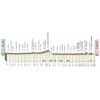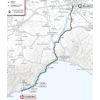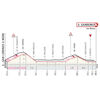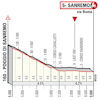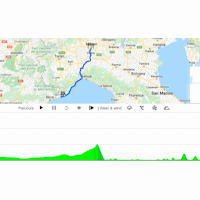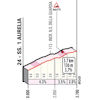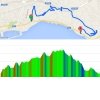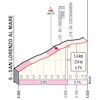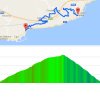Two years ago, the mayors of several towns along the Ligurian coastline refused to close their roads, which meant the Turchino could not be included. Last year, the road over the Turchino was unpassable after a landslide.
The Passo del Turchino is not hard at all. The climb appears after a long stretch on the Po Plain. It’s 25 kilometres long and averages 1.4%. That’s basically a sheer endless false flat.
The riders descend towards the coast to reach the Mediterranean around the midway marker. The route continues to the west until the Capo Mele, Capo Cerva and Capo Berta confront the riders with another minor challenge. The attraction of the capi is that the race finally starts to catch fire by now. There are almost 40 kilometres remaining after the Capo Berta.
Tension rises when the riders move through San Lorenzo al Mare, the village at the foot of the Cipressa. The ascent is 5.5 kilometres long and the average gradient sits at 4.1%. Usually, the sprinters are struggling on the Cipressa, notably in the 9% section halfway up the climb.
Still 20 kilometres remaining at the top. The riders descend back to the coast to enter the Poggio 9 kilometres on the flat later. The 3.7 kilometres climb averages 3.7%, while the steepest ramp – 8% – appears 1 kilometre before the summit. A 3.3 kilometres descent flies down into San Remo before the last 2.2 kilometres of Milan-San Remo are flat.
The Poggio has always been decisive in the last five editions, whether by an attack of a small group or a solo effort. The recent winners on the Via Roma were Michal Kwiatkowski (2017), Vincenzo Nibali (2018), Julian Alaphilippe (2019), Wout van Aert (2020 and Jasper Stuyven (2021).
Ride the route yourself? Download GPX Milan-Sanremo 2022.
Another interesting read: results/race report and start list Milan-San Remo 2022.
Milan-San Remo 2022: route, profiles, more
Click on the images to zoom
